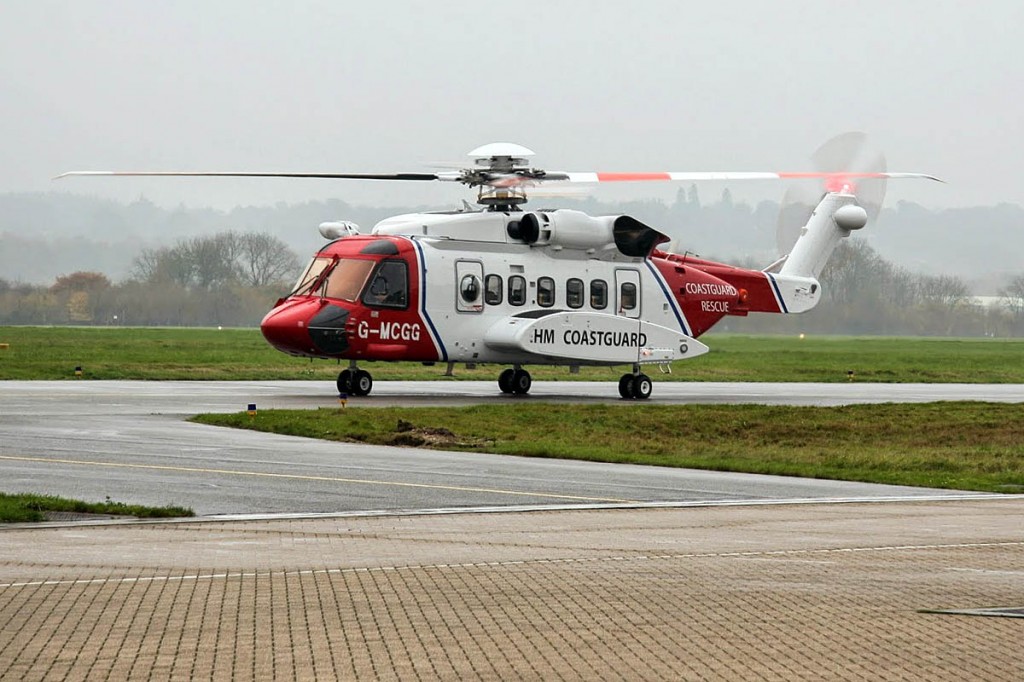Coastguard helicopters that take part in mountain rescue operations were grounded following safety concerns after an incident on a North Sea oil platform.
The Sikorsky S-92 aircraft operated on behalf of the Maritime and Coastguard Agency by Bristow had to undergo a mandatory inspection and repairs where necessary.
The MCA said it was informed of the situation at 8am on Tuesday and its fleet of Sikorksy helicopters were being inspected throughout the day. The aircraft based at Inverness was the first to return to lifesaving service, followed by the S-92s at Stornoway and Sumburgh.
An MCA spokesman said it expected the helicopters at Caernarfon, Humberside, Newquay, and Prestwick to return to service soon afterwards. The AgustaWestland helicopters at St Athan, Lydd, Lee-on-Solent and Portland were not affected.
Sikorsky, a division of the US Lockheed Martin corporation, issued an alert service bulletin on all S-92s following an incident on a production platform in the North Sea east of Aberdeen on 28 December.
The Air Accidents Investigation Branch said on 5 January it was sending a team to Aberdeen to investigate an offshore incident to a helicopter. The concern centred on the Sikorsky’s tail rotor.
Damien Oliver, assistant director with responsibility for aviation at the Maritime and Coastguard Agency said: “This was a highly unusual situation but we were prepared and we pulled out every stop when we were told about it at 8 o’clock this morning.
“We had provision for crews to fly other aircraft if needed and, of course, we have a huge number of resources available in this country for search and rescue operations in addition to our helicopters – Coastguard rescue teams, the RNLI, mountain rescue to name but three.
“Over the coming months, we will be mixing our fleet of aircraft so that we will always have a contingency option in the event of a fleet grounding.”
An S-92 flying workers out to the offshore installation experienced difficulties landing on the oil platform and reports said the aircraft had gouged the landing deck of the West Franklin wellhead.
Sikorsky said in a statement: “Safety is our top priority, and Sikorsky is working closely with our customer and investigative authorities to determine the root cause of the loss of tail rotor authority in the 28 December installation landing.
“Although the investigation into the 28 December incident has not been completed, Sikorsky released an alert service bulletin on 10 January to define additional interim inspection requirements for the S-92 tail rotor pitch change shaft.
“Those procedures include an off-aircraft check of the PCS bearing and that check must be done before next flight with some leeway for getting back to base.
“We are committed to keeping our customers informed. We will further communicate findings if the investigation reveals any safety or airworthiness issues that affect the S-92 helicopter fleet.”
The Sikorsky S-92s are one of the two main helicopter models in the 10-year programme that saw the ageing military Sea King aircraft of the RAF and Royal Navy replaced by MCA-operated search and rescue helicopters with civilian Bristow crews. The bases around the UK have been operating for more than a year.
The MCA said a new £20m AgustaWestland AW189 would go into service at Lee-on-Solent on the south coast this spring, replacing AW139s which have been operating an interim search and rescue service in the area.
